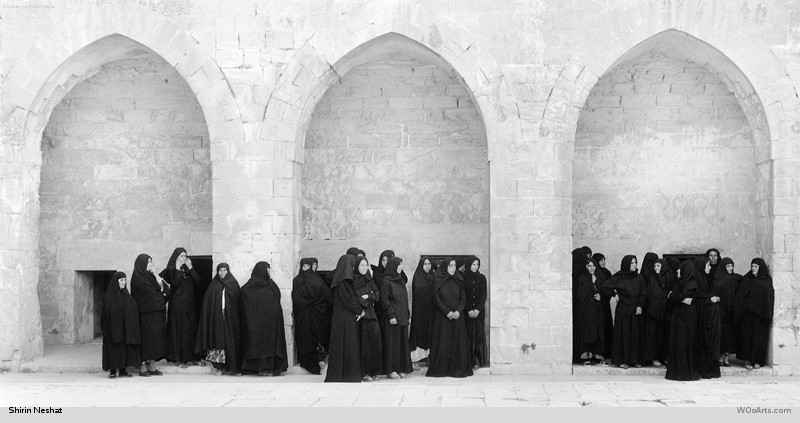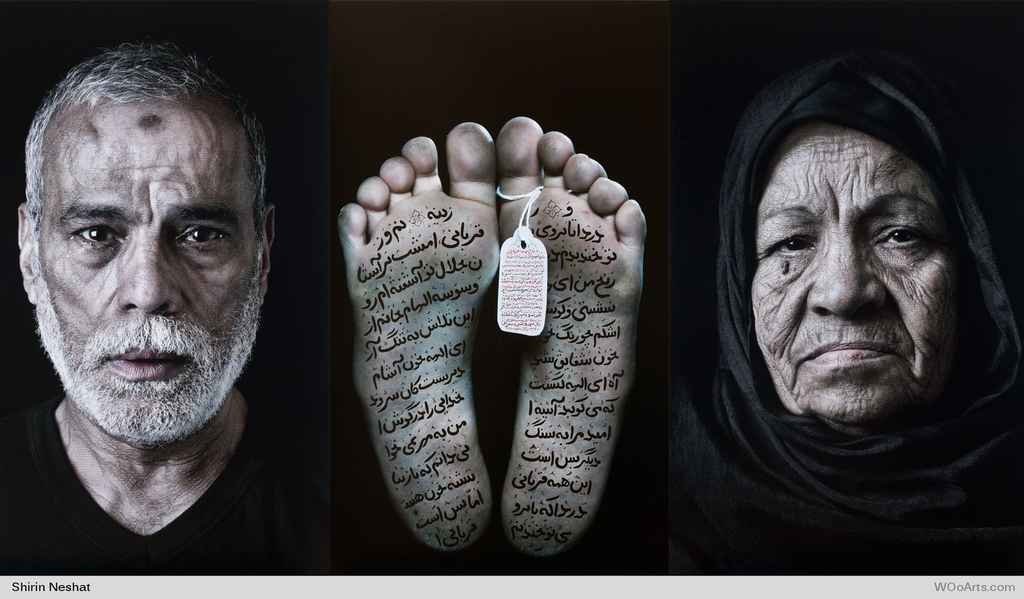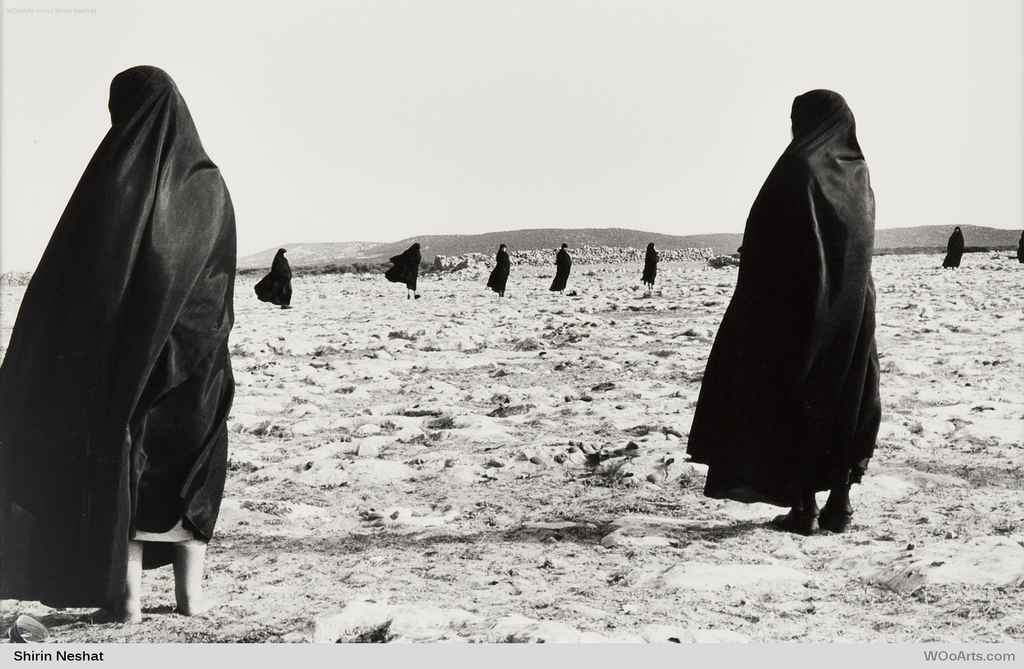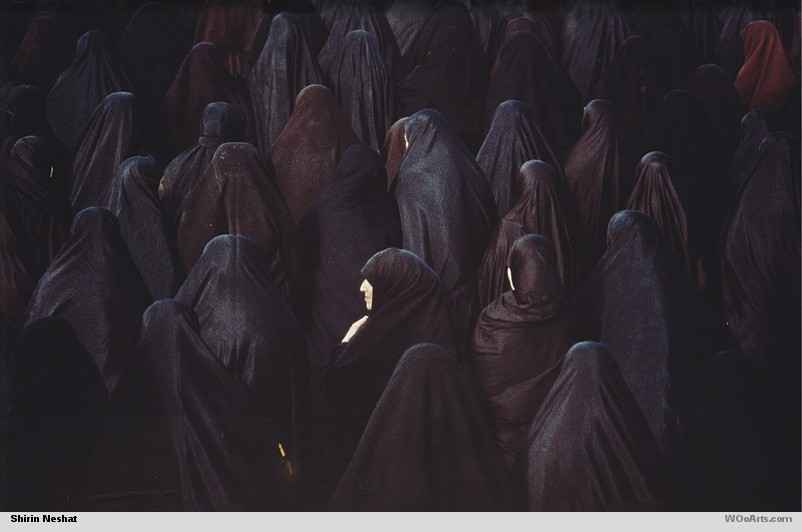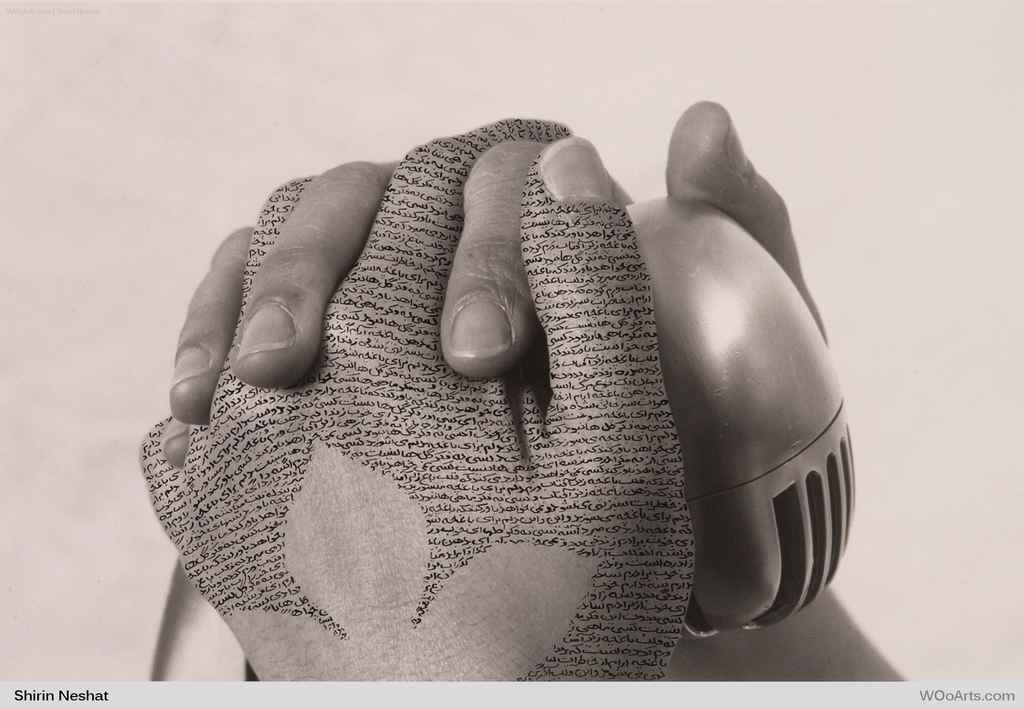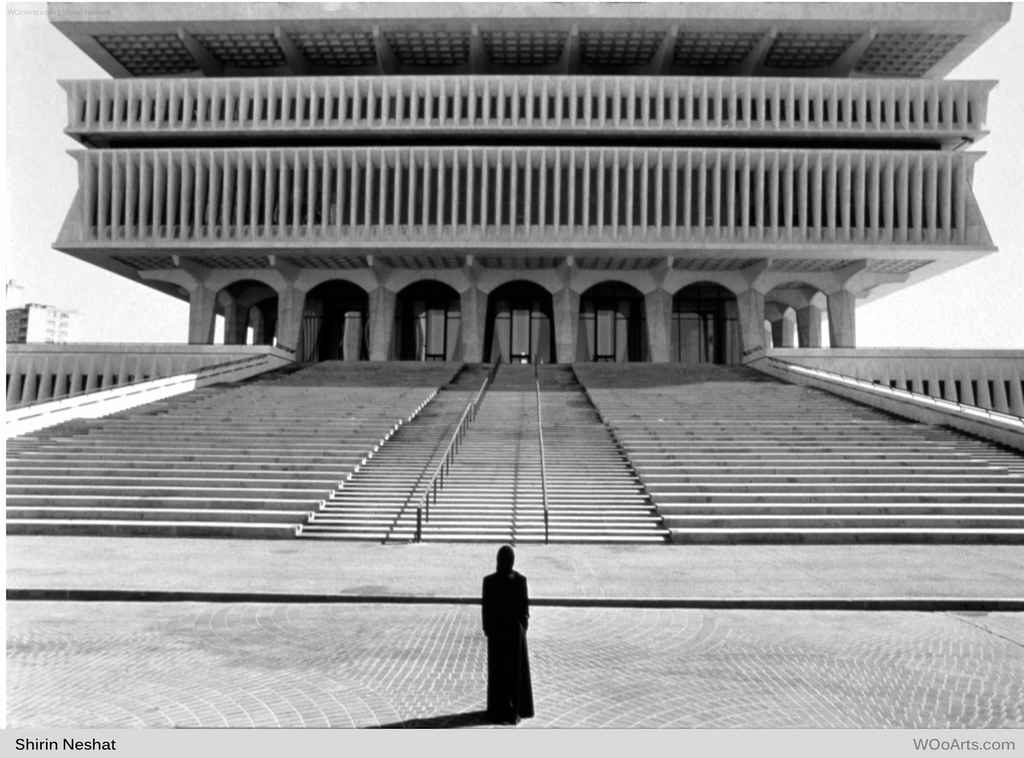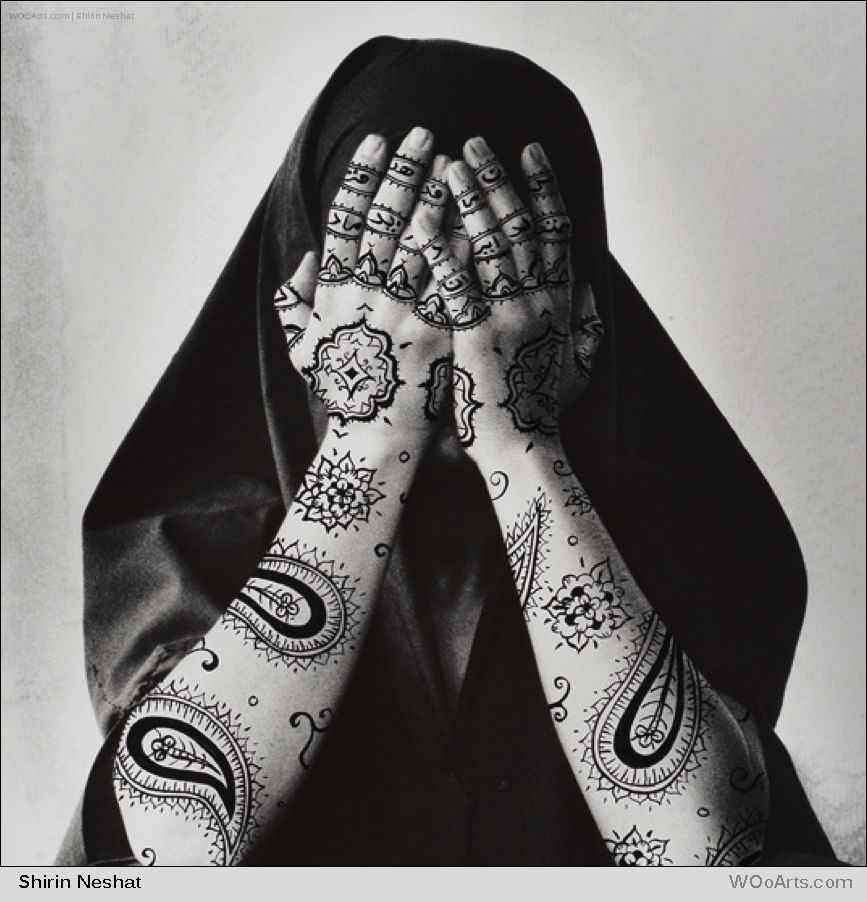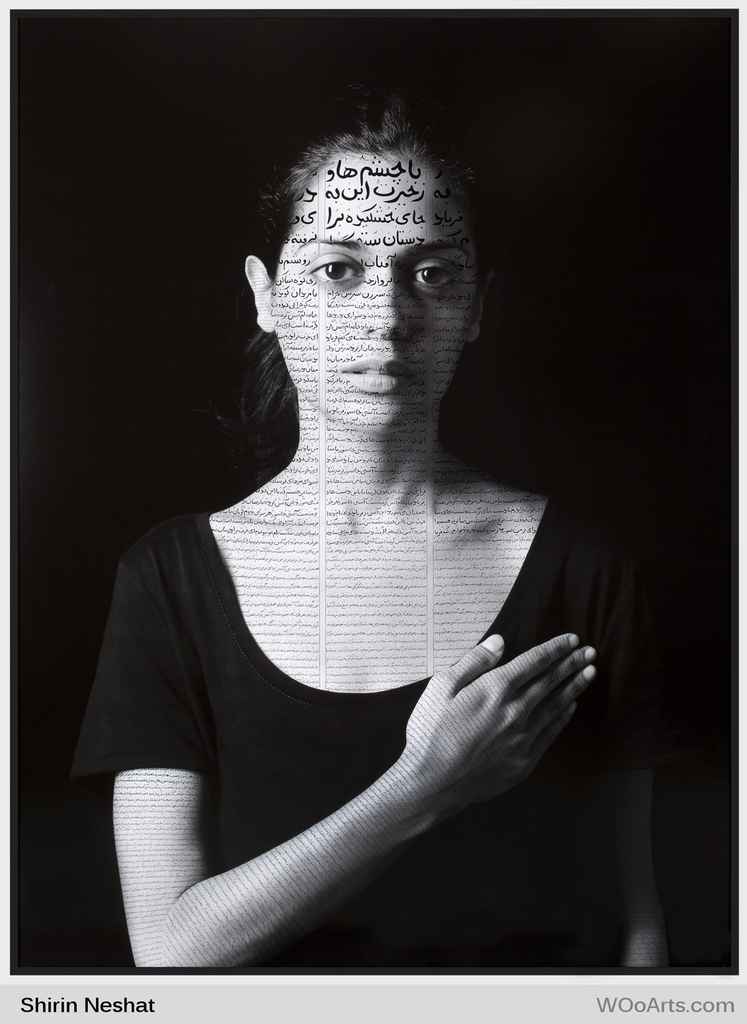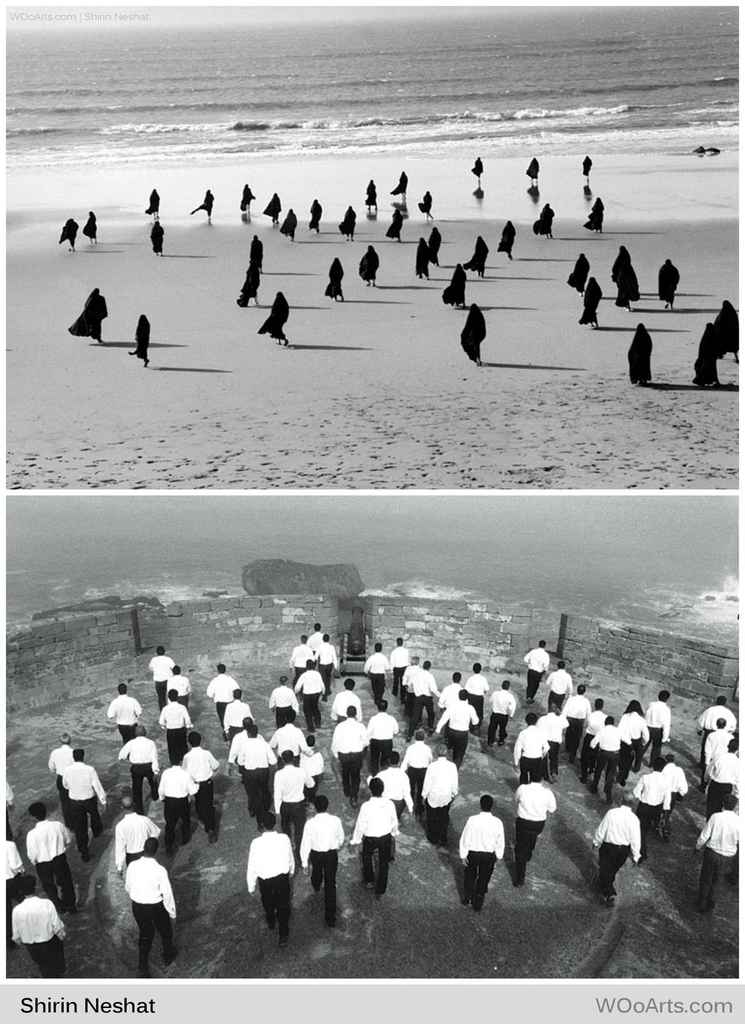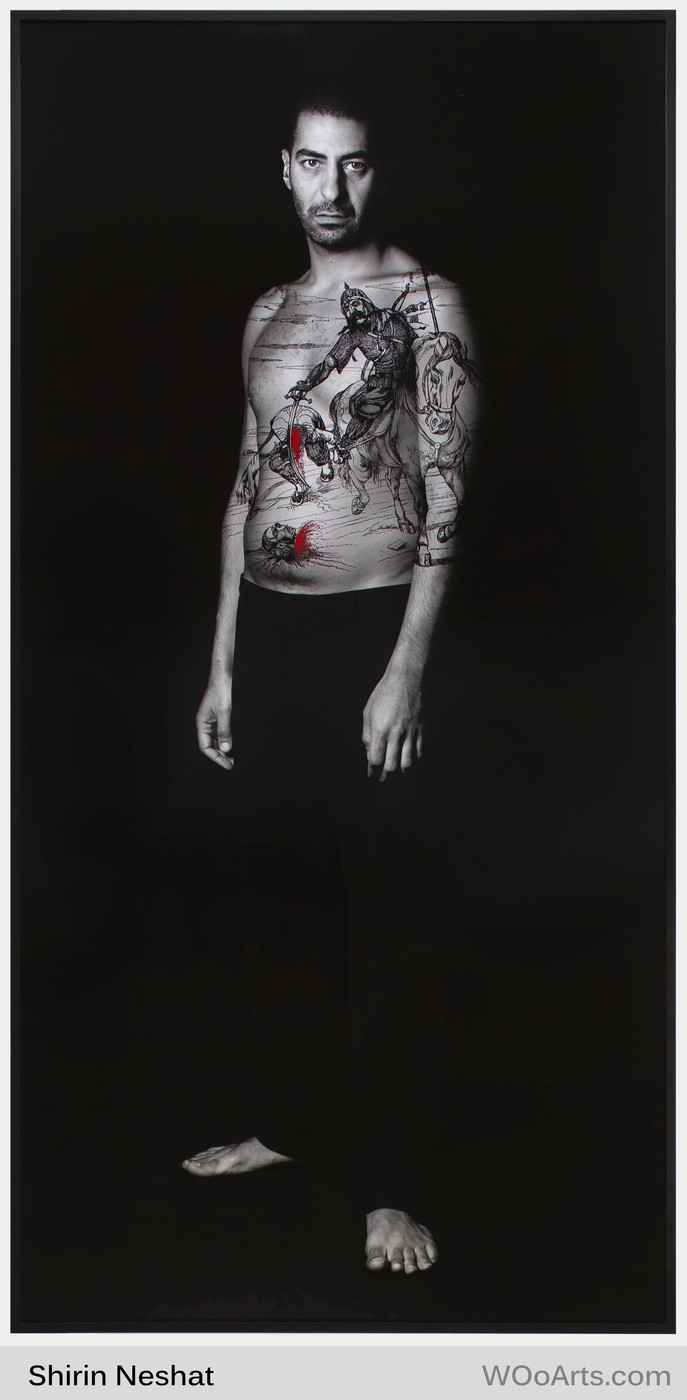Shirin Neshat (Persian: شیرین نشاط; born March 26, 1957) is an Iranian visual artist who lives in New York City. She is known primarily for her work in film, video and photography.

Shirin Neshat was born in Qazvin, Iran, a small city two hours from Tehran in 1957. In 1974, at the age of seventeen, she was sent to the United States to complete her education; the Islamic Revolution in 1979 would prevent her from returning to her country of origin for close to twenty years. After receiving a BA from the University of California at Berkeley in 1983, Neshat moved to New York, where she soon began working at the Storefront for Art and Architecture, an interdisciplinary alternative space in Manhattan. Though Neshat had studied art in college, her arrival in New York commenced a hiatus from art-making until 1993, when she made her first trip back to Iran.
Collaboration has played an important role throughout Neshat’s career; singer and composer Sussan Deyhim and cinematographer Ghassem Ebrahimian have contributed to many of her works, while Passage was a joint project with the composer Philip Glass. In 2003 the Screenwriters Laboratory of the Sundance Institute helped Neshat to develop and begin production on the feature film Mahdokht (2004), an adaptation of Shahrnush Parsipur’s novel Women Without Men; the screenplay is a collaboration between Neshat and the author, and the cinematography is by Darius Khondji, who also shot Tooba. Since 2003 Neshat has continued to probe the central themes (religion, violence, madness, and gender) and characters in Women Without Men through photographic series like Zarin (2005) and the film Faezeh (2008).
Since her first solo exhibition, at Franklin Furnace in New York in 1993, Neshat has been featured in solo exhibitions at the Whitney Museum of American Art (1998), the Art Institute of Chicago (1999), Dallas Museum of Art (2000), Kunsthalle Wien in Vienna (2000), National Museum of Contemporary Art in Athens (2001), Walker Art Center in Minneapolis (2002), Hamburger Bahnhof, Museum Für Gengewart in Berlin (2005), Stedelijk Museum (2006), and National Gallery of Iceland in Reykjevik (2008). She has also participated in the Venice Biennale (1995 and 1999), Austrian Triennial on Photography in Graz (1996), Biennale of Sydney (1996 and 2000), Johannesburg Biennale (1997), Istanbul Biennial (1998), Carnegie International (1999), Whitney Biennial (2000), Moving Pictures at the Solomon R. Guggenheim Museum (2002), Documenta 11 (2002), ICP Triennial of Photography and Video at the International Center of Photography in New York (2003), and Lights Camera Action at the Whitney Museum of American Art in New York (2007).
Since 2000 Neshat has also participated in film festivals, including the Telluride Film Festival (2000), Chicago International Film Festival (2001), San Francisco International Film Festival (2001), Locarno International Film Festival (2002), Tribeca Film Festival (2003), Sundance Film Festival (2003), and Cannes Film Festival (2008).
Among the many awards Neshat has won are the First International Prize at the Venice Biennale (1999), the Grand Prix at the Kwangju Biennale (2000), the Visual Art Award from the Edinburgh International Film Festival (2000), the Infinity Award from the International Center of Photography in New York (2002), the ZeroOne Award from the Universität der Künste Berlin (2003), the Hiroshima Freedom Prize from the Hiroshima City Museum of Art (2005), and the Lillian Gish Prize in New York (2006). She lives and works in New York.
via: guggenheim.org

